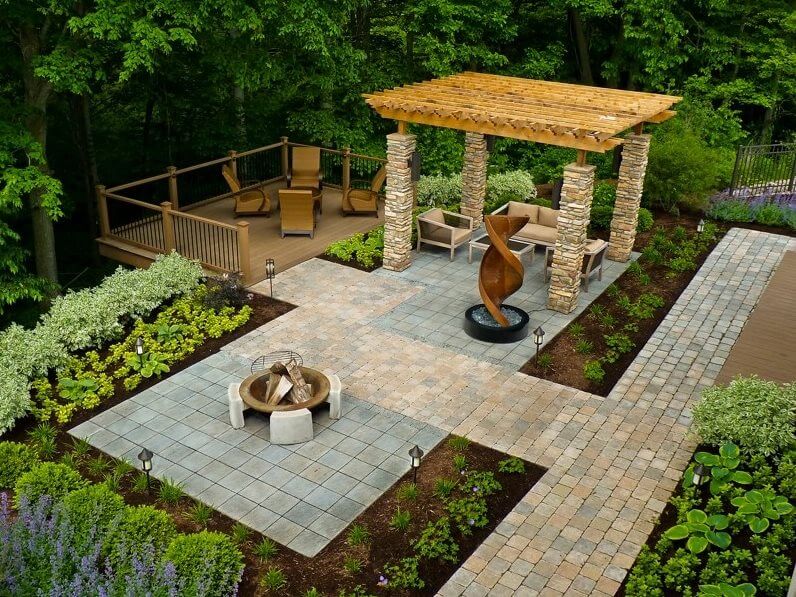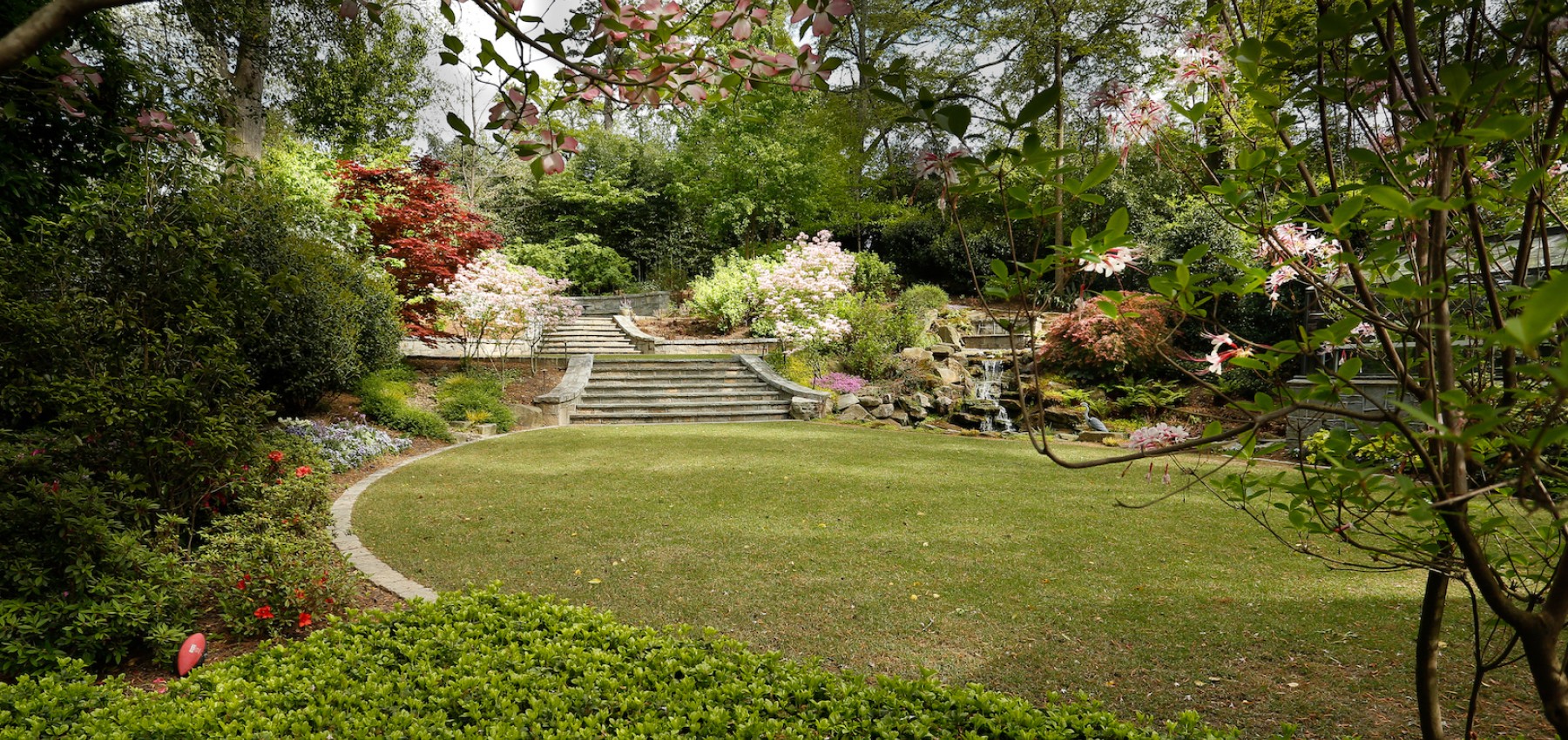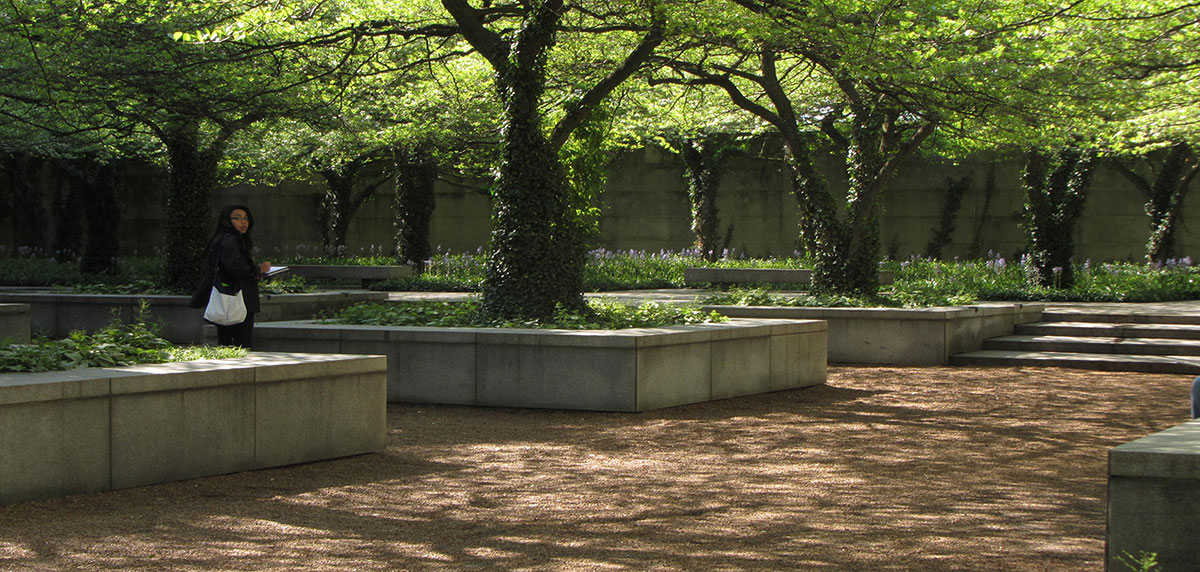The Best Guide To Landscapers
The Best Guide To Landscapers
Blog Article
The Main Principles Of Landscapers
Table of ContentsNot known Factual Statements About Landscapers 8 Easy Facts About Landscapers DescribedHow Landscapers can Save You Time, Stress, and Money.More About LandscapersThe Best Guide To LandscapersEverything about Landscapers
- A yard attribute where water is stood for by an aggregate stone item, normally a crushed rock or granite.- A rock or flagstone patio, course, or sidewalk built without a concrete base.- A rock retaining or free standing wall developed without making use of mortar. A highly competent mason is needed for a completely dry stack rock wall surface. The majority of walls in Rose city are moist stacked, even if they show up to be. - A below ground structure that accumulate water and permits it to slow down percolate into the soil around it.
Landscape design that is suitable with a sites' setting in both look and sustainability without unfavorable influences to the environment. Bordering in the landscape is a line of separation that creates aesthetic passion in the garden by dividing one section from an additional sector.
Locations can also have a sensation of "enclosure" provided by trees, various other plantings, fencings, or displays. The landscape near the entry to a structure. A tree, bush or creeping plant, educated to grow on a wall surface or fencing right into a details pattern. Particularly beneficial for fruit trees, making it simple to collect the fruit and containing mess.
8 Easy Facts About Landscapers Explained

The element in a landscape style or location in a landscape that is suggested to be most prominent. The focal factor can be a plant, boulder, sculpture, collecting area, or various other landscape attribute.

The Definitive Guide to Landscapers
Rock product, either rounded or fractured, that is fairly little- typically 1" or much less. Low plants that are allowed or urged to spread over an area. Can refer to any type of "hard" garden components consisting of statuary or stones yet most generally is used to describe paths, patio areas, and walls.: Elevation distinction in between the level of water in a pond (or the level of the pump if it sits outside the pond) and the upper electrical outlet of water which impacts efficiency of the water pump in gph (gallons per hour). Thick hedges or trees that form a fence, screen, or limit.
A chemical made use of to control weeds. Fencing boards that run flat, commonly used in contemporary or Japanese-inspired landscape layouts. Lines that define spaces within a landscape concept. These typically expand from edges or crucial features of an existing structure. Appropriate use of fictional lines can assist the landscape really feel attached to the home and other aspects.
Conventional PNW landscapes are informal. A plant that spreads out more than wanted, or right into habitats where it does damages.
Some Known Details About Landscapers
Smart irrigation controller testimonials and referrals right here. 2-D making of the proposed watering system. Can consist of head positionings and coverage, pipeline sizing, GPM specifications, and materials required to install this system. A watering strategy is typically unneeded for properties however prevails for commercial jobs. Accredited professional who creates landscapes, educated in engineering and style as well as in gardening.
The specialist who plans and creates landscape tasks, usually at a household or small industrial degree with the significant style catalyst on plantings. Landscape designers generally check out this site have less schooling than Landscape Architects and are not certified. A completed landscape design, outlining all aspects for the new landscape. This typically takes the type of a drawing on paper.
Using many growings of the exact same variety to fill in a location in the landscape. This can reduce maintenance and water usage in the garden.
A mix of concrete, sand, and water that is utilized in stone stonework for setting rocks and joints. A layer of compost or bark dirt applied at the base of a plant. A mass growing of moss. A plant that was existing in a geographical place before people began transforming the landscape.
The 5-Second Trick For Landscapers
How the yard or news a garden component is prepared in relationship to an existing or brand-new attribute or to an instructions. Keeping a lawn without the use of chemical herbicides, pesticides, or plant foods. Turfs that are not mowed however grown in landscapes as perennials. This is a partly open sided leisure or recreation area that adjoins a residence, used for enjoyable, exterior eating and just delighting in the outside setting.

Plants that provide seasonal interest and then pass away back in the winter season. Cold season yard that is the most usual turf yard in Portland, OR and the rest of the PNW.An open roofed structure over an outdoor patio or check out this site other landscape function.
The most common landscape crushed rock in the PNW. Location of the landscape developed to handle rain water until it can soak into the ground.
Structure made from timber, concrete, paving stones, blocks or various other products for stabilizing slopes and protecting against extreme erosion. Narrow watercourse. Producing a yard attribute consisting primarily of stones with growings that complement and can grow in the rocky atmosphere. Lawn sprinkler head design that rotates a stream of water throughout an area.
Not known Facts About Landscapers

Report this page